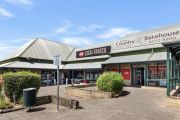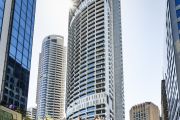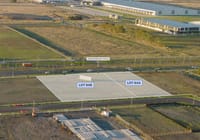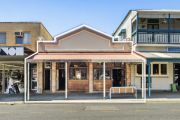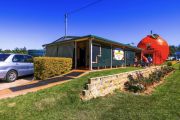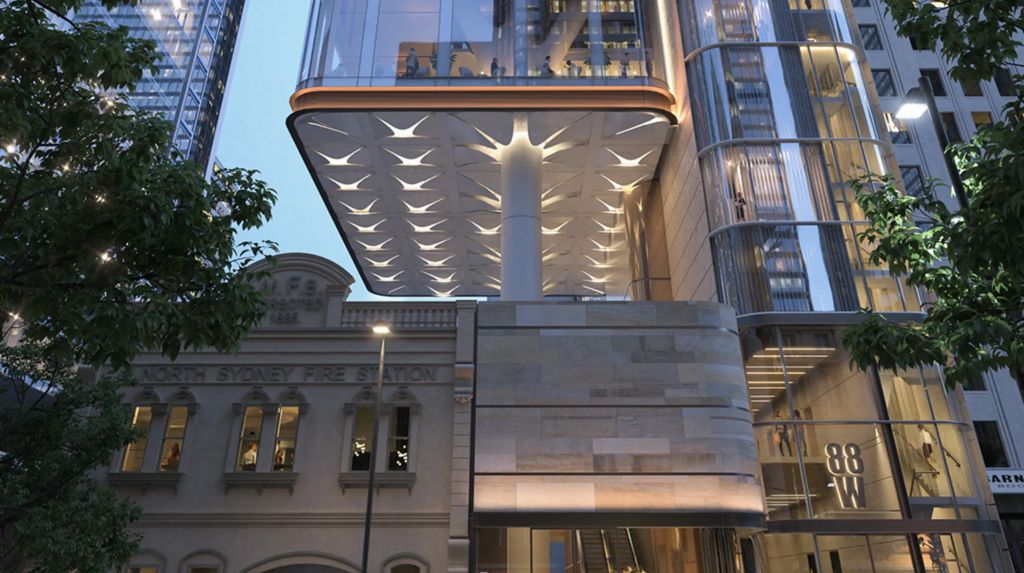
Billbergia adds the tallest tower to the North Sydney skyline
Private developer Billbergia has shown that North Sydney is back on the map after topping out what is the tallest mixed-use tower near the heart of its CBD at 88 Walker Street.
Standing at 180 metres, the 50-storey site will comprise 24 levels of commercial office space, acquired earlier in 2022 by LaSalle Investment Management and a 252-suite 4-star hotel, snapped up by Singaporean-based Ascott Limited in 2019.
This compares to the Salesforce tower developed by Lendlease at Circular Quay which stands at 55-storeys, or 263 metres, making it the tallest office tower in Sydney. The project also includes the former North Sydney Fire Station, now called the Firehouse Hotel.
Billbergia topped out the structure during the week. The topping out of a building is traditionally held when the last beam, or its equivalent, is placed atop a structure. To mark the occasion, developers usually add a tree.
A signature element of the design is its cantilever, which enables the building to sit suspended above the Firehouse Hotel and increases the floor space from around 4000 square metres to more than 22,800 square metres.
The group’s development manager Saul Moran said 88 Walker Street will contribute to North Sydney’s revitalisation and create an “iconic design to the city’s skyline”.
“The concept of cantilevering the building unlocked the ability for us to develop the airspace above the Firehouse Hotel and maximise the efficiency of the tower,” Moran said.
Along with the new 252-room hotel that will be managed by The Ascott Limited, Citadines Walker North Sydney has committed to 20 levels of the tower including two floors of guest amenities comprising a restaurant, bar, residents lounge, gym, and hotel reception.
It was designed by architects fitzpatrick+partners with the engineering of the 650 square metres into the tower undertaken through a collaboration between engineering firms TTW and WSP, as well as Billbergia’s in-house construction team.
Leasing agents Colliers International and CBRE have pre-leased 10 per cent with a further 10 per cent under offer and said the office floors that start from level 25 will have views spanning Sydney Harbour and to the Sydney CBD.
After years of inactivity, North Sydney Council has given the green light to about $11 billion worth of new projects in the past few years.
Developments that are on the drawing board or under construction, include Lendlease’s $1.2 billion Victoria Cross metro station development and its joint venture at Blue and William Streets; Stockland’s proposed $1.3 billion redevelopment of 110-122 Walker Street site and the private developers Third.i’s $650 million skyscraper known as Warada on Walker, being built with joint venture partner Toohey Miller.
They come against the backdrop of a volatile office market where vacancy in the area stands at about 16.6 per cent at the Property Council’s last count.
Ray White Capital’s head of research Vanessa Rader said the CBD and fringe office markets were one of the hardest hit during COVID-19. This was due to the move to work from home which has led businesses to reconsider their accommodation needs, either relocating, reducing, or vacating their office premises.
“As a result, office vacancies across the country have shown an increase putting pressure on rents and capital values,” Radar said.
But she said that in the longer term, the underlying demand for the sector will remain high given the past 10-year return of 10.8 per cent per annum.
LJ Hooker Group’s head of research, Mathew Tiller, agreed the office sector’s recovery was underway “but still a long way from pre-pandemic occupancy”.
“The leading office markets of Sydney and Melbourne have recorded incremental increases in rents but Brisbane – with mining performing strongly and tourism in recovery – recorded the fastest growth on rents this year, albeit from a low base,” Tiller said.
“The upward trend in rents may surprise tenants who are coming off leases, but it’s a reflection of landlords wanting to peg their agreements to [the] CPI; incentives remain traditionally high.”
He said leases were still being negotiated, but occupiers were uncertain how much space they needed.

